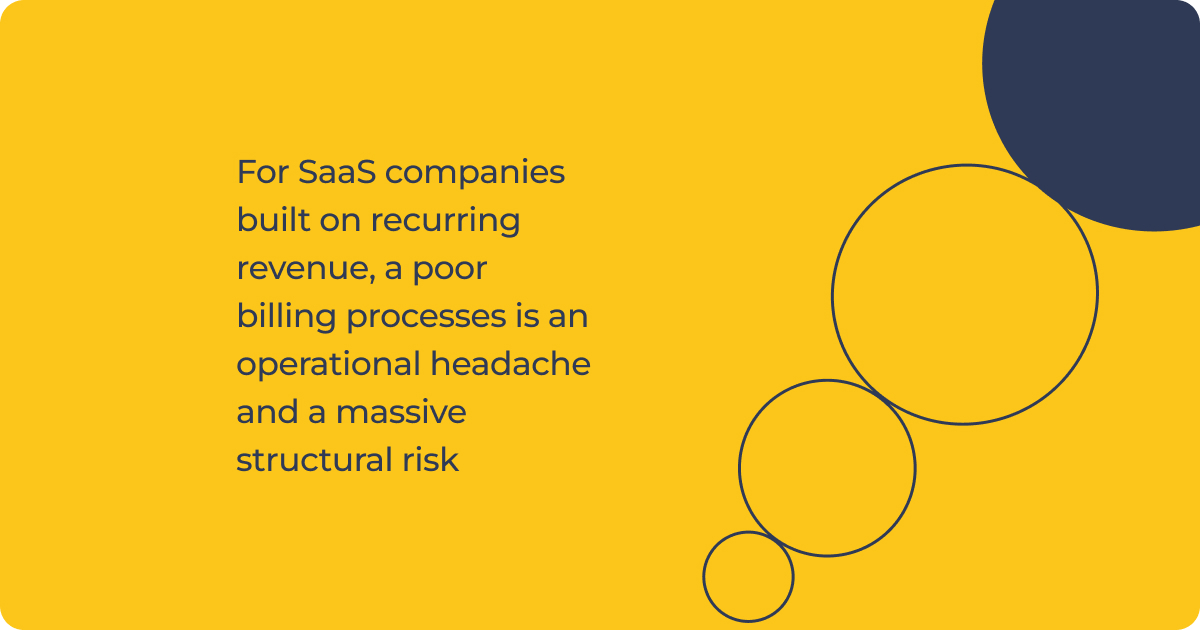Billing should be the moment when managed services providers show the value they deliver, but too often it’s when money and trust are lost. Usage data comes in from different systems, contracts sit in separate tools or spreadsheets, and pricing rules or partner agreements vary by customer. When these pieces don’t fit together at billing time, invoices get delayed, disputes increase, and payments take longer to arrive.
The hidden cost isn’t just margin leakage; it’s the loss of customer confidence and operational agility. That’s why more MSPs are rethinking the role of data mediation: the connective tissue that turns fragmented inputs into accurate, auditable invoices.
In this article, we’ll look at why MSP billing breaks down, what effective data mediation looks like, and the practical steps finance and service leaders can take to fix it.
Why MSP Billing Breaks Down
For many managed services providers, billing isn’t broken because the team doesn’t care or contracts aren’t clear, it’s broken because the data behind billing is fragmented and unreliable. As a result, teams turn to spreadsheets, manually consolidating downloads, adjusting cost allocations, and layering in reseller splits. This slows billing cycles, creates errors, and fuels disputes. What should be a clear proof of value instead becomes weeks of manual work and a frequent source of friction with customers.
The Real Price of Poor Mediation
Poor data mediation doesn’t just slow billing, it weakens the entire business. When usage, contracts, and pricing don’t align, cash flow stalls, write-offs rise, and customers lose trust. Imagine a large MSP where billing drags on for weeks because teams have to pull data from multiple portals, fix mismatched records, and manually layer in partner splits. By the time invoices are ready, customers are already frustrated, and the provider ends up offering discounts just to close the books.
The real price is twofold: unpredictable cash flow for the provider and declining confidence from customers. Both are preventable with smarter data mediation in MSP billing.
What Good Data Mediation Looks Like
The answer to broken managed services provider billing isn’t more spreadsheets, it’s a smarter approach to data mediation. A well-designed mediation layer sits between your usage systems, contracts, and billing platform, turning messy inputs into clean, bill-ready outputs.
Here’s what it should deliver:
Collect and validate usage at scaleData comes in from ITSM systems, CMDBs, cloud portals, and third-party services. Mediation ensures every record is captured, deduplicated, and ready for billing, even when volumes spike.
Enrich and map to contracts and price rulesUsage data alone isn’t enough. Mediation ties each record back to entitlements, customer-specific pricing, cost centers, and partner splits, creating a reliable foundation for invoices.
Daily rating and visibilityInstead of waiting until month-end, mediation applies rating rules every day, so finance teams can see tomorrow’s invoice today. This enables early anomaly detection, accurate forecasts, and smooth revenue recognition across AR and GL systems.
Automated invoicingWith mediation in place, invoices can be grouped by customer, split by project, scheduled automatically, and sent via e-invoicing, all without manual intervention.
Strong data mediation makes usage-based billing predictable, auditable, and trusted. It removes the friction between systems, shortens billing cycles, and helps CFOs, RevOps, and service delivery leaders focus on growth instead of reconciliation.
The MSP Playbook: 5 Steps to Bulletproof Billing
Transforming managed services provider billing doesn’t happen by chance — it requires a structured approach to data mediation. The following five steps form a practical playbook any MSP can use to eliminate revenue leakage, speed up cash flow, and build customer trust.
- Inventory sources and identifiers
Get started by listing every system that generates usage data. Note how each one structures data and where identifiers overlap or conflict. This step exposes where billing errors start and gives you a full view of your data landscape. - Define the “contract truth”
Create a single source of record for customer entitlements, pricing, and terms. This becomes the benchmark against which all usage is validated. When contracts drive billing, you reduce disputes and protect margins. - Normalize usage
Convert raw events into consistent, business-ready metrics such as gigabytes processed, minutes of support delivered, or API calls served. Normalization makes usage-based billing clear, transparent, and defensible for both you and your customers. - Encode rating and sharing rules
Program pricing logic, partner revenue splits, and cost allocations into the mediation layer. Automation eliminates spreadsheet errors, accelerates invoice cycles, and ensures every stakeholder gets their correct share. - Shift to daily charge creation and alerts
Generate charges on a daily basis instead of waiting for month-end. Daily rating provides real-time visibility into revenue, improves forecasting accuracy, and flags anomalies before they turn into customer disputes.
How to Measure Success
The results of good data mediation in MSP billing are clear: less manual work, faster cash collection, and fewer invoice disputes. Success shows up in key metrics like lower Days Sales Outstanding (DSO), fewer disputes and write-offs, and a higher on-time invoice rate.
Advanced mediation can already handle massive data volumes across many systems, providing source-to-invoice traceability that meets IFRS and GAAP standards. Daily charge creation not only improves forecasting accuracy but also flags anomalies before they become problems. And with common integrations, such as connecting ServiceNow ITSM directly to billing, usage, contracts, and invoices stay perfectly aligned.
From Data Chaos to Cash Flow: How Good Sign Helps
For managed services providers, billing only works when usage, contracts, and pricing stay in sync. Without it, revenue leaks, disputes rise, and customer trust erodes. Data mediation closes those gaps by unifying systems, normalizing usage, and producing accurate, auditable invoices. Good Sign’s contract-centric revenue management platform makes this possible by automating data mediation end to end. The result: faster cash flow, fewer disputes, and stronger margins.
Frequently Asked Questions
-
How does data mediation reduce revenue leakage in MSP billing?
Data mediation reduces revenue leakage by making sure all usage is captured, normalized, and linked to the right contract terms before invoices go out. Without mediation, raw data can be missed, mismatched, or applied to outdated pricing. Mediation provides a traceable path from “source event” to “invoice line,” closing gaps that often cause errors, write-offs, or disputes. -
Do I need billing mediation if I use ServiceNow?
Yes. ServiceNow and other ITSM/CMDB systems are excellent for managing incidents, assets, and entitlements, but they don’t handle billing logic. Billing requires enrichment, rating rules, partner splits, and accounting entries that go beyond ITSM. Mediation bridges that gap by feeding accurate, contract-ready data into billing, AR, and revenue recognition systems. -
What systems should connect to MSP billing?
MSP billing works best when it connects to all the core systems that generate or govern data. This includes ITSM/CMDB platforms (such as ServiceNow) to capture entitlements, tickets, and asset data; cloud portals and third-party services that provide usage and consumption feeds; contract or CPQ systems to enforce pricing rules, discounts, and terms; and finance systems (ERP, AR/GL, revenue recognition) for compliance and reporting. When these systems flow through a mediation layer, invoices are consistent, traceable, and delivered on time. -
How to map usage data to contracts in managed services?
Mapping usage data to contracts starts by defining a single source of truth for entitlements and terms. Usage is then normalized and enriched with the right contract ID, customer account, and service level. This ensures every charge aligns with what the customer actually bought, and every invoice line can be traced back to a contract clause. -
How to handle partner splits in MSP invoices?
Partner splits are best handled by encoding sharing rules directly into the mediation layer. Instead of manually calculating percentages in spreadsheets, mediation applies predefined rules. This automation eliminates errors, speeds invoicing, and ensures both partners see their share reflected consistently, without reconciliation headaches later.
%20Billing-%20Fix%20Your%20Data%20Mediation%20Issues-1.jpg)


